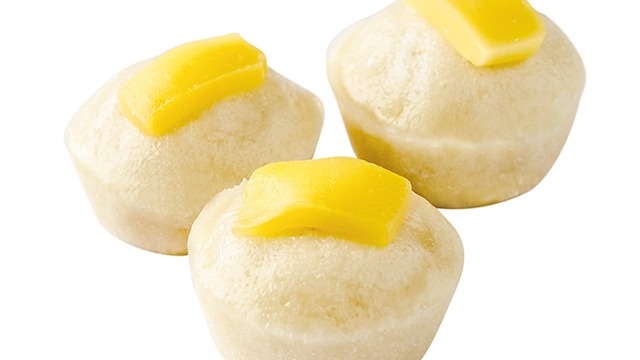Who doesn’t love a soft, fluffy bite of puto cheese?
This classic Filipino delicacy is more than just a delicious snack—it also offers surprising health benefits.
Made from rice flour, sugar, and cheese, puto cheese provides a good source of energy while satisfying your cravings.
A single serving (around 50g) contains approximately 120-150 calories, depending on the ingredients used.
These calories mainly come from carbohydrates, fats, and proteins, making puto cheese a quick energy source.
However, while puto cheese is a favorite treat for many, some people wonder if eating it too often has any downsides.
Could it contribute to weight gain? Is it bad for people with certain health conditions?
In this article, we’ll dive into the benefits of puto cheese, from its energy-boosting carbs to its calcium-rich cheese topping.
We’ll also discuss its caloric content and any possible side effects so you can enjoy this treat while making informed choices about your diet.
Let’s get started!

5 Health Benefits of Puto Cheese
1. A Quick Source of Energy
Puto cheese is primarily made from rice flour, which is rich in carbohydrates.
Carbs are the body’s main source of energy, making puto cheese an excellent snack to keep you fueled throughout the day.
Whether you need a boost in the morning or a quick pre-workout snack, this Filipino delicacy can provide the necessary energy to keep you going.
Additionally, the sugar in puto cheese provides instant glucose, which can quickly be used by the brain and muscles.
However, for those watching their sugar intake, it’s best to enjoy puto cheese in moderation or opt for a low-sugar version.
Also Read: Benefits of Lipton tea
2. Rich in Calcium for Strong Bones and Teeth
One of the best things about puto cheese is its cheese topping, which contributes a healthy dose of calcium.
Calcium is an essential mineral that helps maintain strong bones and teeth while reducing the risk of osteoporosis.
Cheese varieties like pepper jack cheese and cheese curds are excellent sources of calcium.
Additionally, consuming unpasteurized cheese in moderation may provide extra enzymes and beneficial bacteria that aid in calcium absorption.
If you’re looking to strengthen your bones naturally, adding dairy-based toppings to puto cheese is a smart choice.

3. Contains Probiotics for Better Digestion
Certain types of cheese, such as cottage cheese probiotic, contain probiotics—healthy bacteria that support digestion and gut health.
These probiotics can improve nutrient absorption, reduce bloating, and promote a healthy balance of gut flora.
A well-balanced gut microbiome plays a crucial role in overall health, helping to boost immunity and reduce inflammation.
4. Good Source of Protein for Muscle Growth and Satiety
Protein is essential for building and repairing muscles, and cheese is a great source of it.
The cheese in puto cheese—whether it’s cheddar, cottage cheese probiotic, or cheese curds—contains high-quality protein that supports muscle growth and recovery.
Protein also plays a vital role in keeping you full for longer periods.
Unlike sugary snacks that cause quick spikes and crashes in blood sugar levels, protein-rich foods help maintain steady energy levels.
This makes puto cheese a more satisfying alternative to processed, carb-heavy snacks.
Also Read: Benefits of Rutabaga
5. May Contain Healthy Fats That Support Brain Function
While some people avoid cheese due to its fat content, not all fats are bad.
Cheese contains essential healthy fats that aid in brain function, hormone production, and vitamin absorption.
Fats found in cheese, particularly in varieties like pepper jack cheese, provide omega-3 fatty acids and conjugated linoleic acid (CLA), which are known to have anti-inflammatory and heart-health benefits.
Additionally, healthy fats help the body absorb fat-soluble vitamins like A, D, E, and K.
For an extra nutrient boost, you can experiment with special puto cheese ingredients, such as chile poblano, which adds antioxidants and vitamins while enhancing flavor.

Possible Side Effects of Puto Cheese
While puto cheese is a delicious treat with many benefits, it’s important to enjoy it in moderation.
Here are some potential downsides to consider:
1. High in Sugar and Carbs
Since puto cheese is primarily made of rice flour and sugar, eating too much may contribute to weight gain, especially if you have a sedentary lifestyle.
If you’re watching your sugar intake, you may want to limit portions or opt for a version with less sugar.
2. Lactose Intolerance Concerns
People who are lactose intolerant may experience bloating, gas, or digestive discomfort when consuming cheese-topped puto.
If this applies to you, try using lactose-free cheese alternatives.
3. Shelf Life Considerations
The puto cheese shelf life depends on storage conditions.
Since it’s made from rice flour and dairy, it can spoil quickly, especially in warm climates.
To extend freshness, store it in an airtight container and refrigerate it. Properly stored, puto cheese can last up to a week.
4. Processed Cheese Risks
If you use highly processed cheese, such as pre-packaged cheese slices, you might consume additives and preservatives.
Some people wonder, “Is cheese bad for you?” While processed cheese products aren’t inherently harmful in small amounts, they often contain high sodium and artificial ingredients that may not be the best choice for regular consumption.
Also Read: Benefits of Fiddleheads
Special Puto Cheese Ingredients to Try
Traditional puto cheese is made with rice flour, sugar, baking powder, eggs, milk, and cheese.
However, you can experiment with special puto cheese ingredients to enhance the flavor and nutrition:
- Chile poblano – Adding finely chopped chile poblano can give puto cheese a mild heat and an extra boost of vitamins A and C.
- Different cheese varieties – Swap out the usual cheddar for pepper jack cheese for a spicy twist or cottage cheese probiotic for a softer texture and probiotic benefits.
- Alternative flours – Instead of rice flour, try cassava flour for a gluten-free version.
FAQs
1. How long does puto cheese last?
The puto cheese shelf life depends on how it’s stored.
If kept in an airtight container at room temperature, it lasts for about 2-3 days.
Refrigerated puto cheese can last up to a week.
For longer storage, you can freeze it for up to a month and reheat it when ready to eat.
2. Can I use different types of cheese for puto cheese?
Yes!
While traditional puto cheese uses cheddar, you can experiment with pepper jack cheese for a spicy twist, cottage cheese probiotic for a softer texture, or unpasteurized cheese for additional probiotics.
3. Is puto cheese healthy?
Puto cheese can be a healthy snack when eaten in moderation.
It provides energy, calcium, protein, and healthy fats.
However, it’s best to limit sugar intake and choose natural cheese over highly processed varieties.
4. Can people with lactose intolerance eat puto cheese?
It depends on the type of cheese used.
Some cheeses, like aged cheddar, contain lower lactose levels and may be tolerable in small amounts.
Lactose-free cheese options are also available for those with severe intolerance.




